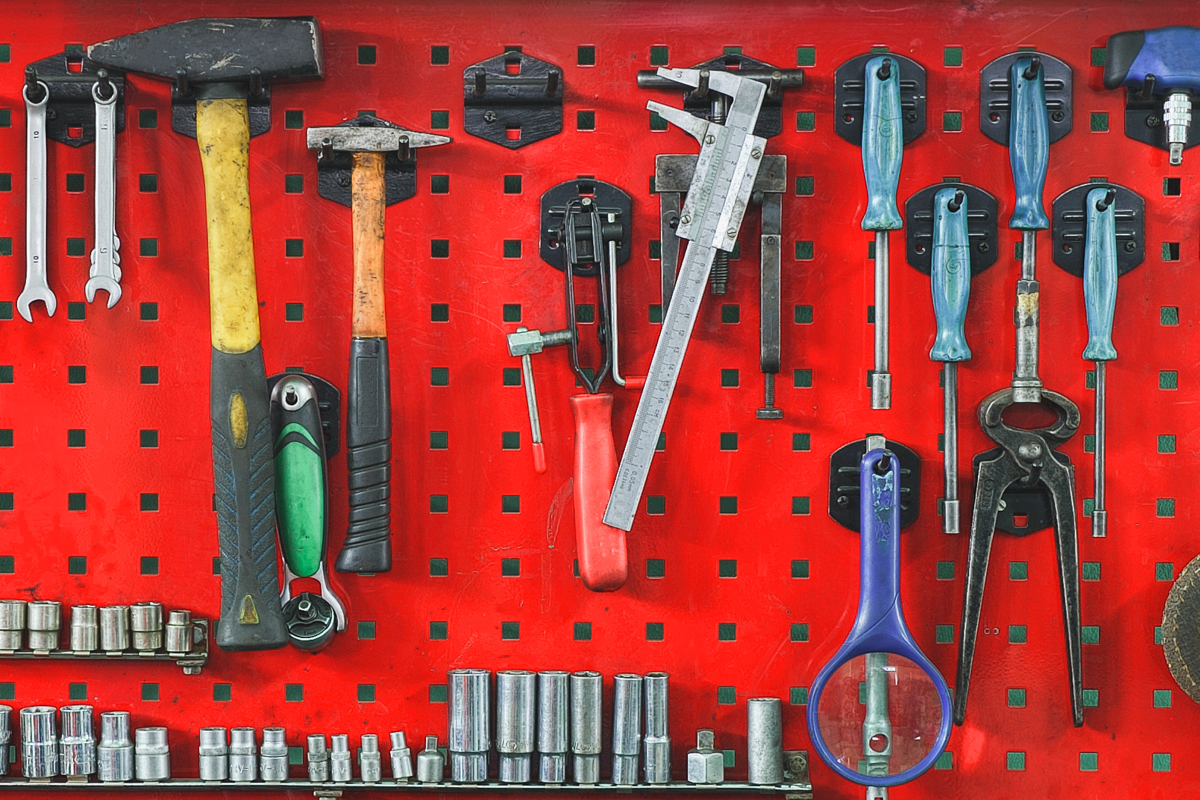Being able to make minor repairs around the home, and having a well-stocked toolbox, is an important part of home ownership. Even if your repairs are as small as being able to fix a squeaky hinge or hang a frame on the wall, a toolbox can ensure you’re giving your home some love. You may not have room for a workshop in the garage or basement, but a small, portable toolbox filled with basic tools will make you feel like a responsible homeowner or renter.

A basic toolbox can be purchased at your local hardware store and can vary in size and storage compartments. A basic model will have a hinged top that locks, key for keeping heavy tools from opening the lid during transportation. A box with a removable inner compartment can be useful for storing several layers of tools and can allow space for oddly-sized tools like hacksaws or hammers. You’ll also want smaller compartments to hold small hardware pieces like nails, screws, bolts and other fasteners. If your toolbox doesn’t come with lidded containers, consider reusing empty tins or small plastic containers that can be easily opened and closed. Use a piece of tape and marker to clearly label the size of nail or hardware. Toolboxes that have a closed lid are great for storing items that could fall out easily, they are also durable and square enough to stack on top of other boxes for storing. Open totes tend to be a bit larger and allow longer items, like spirit levels, to stick out. Whichever style you choose, be sure you are able to carry it when full and that the handle is comfortable.

Much like your cleaning basket, keeping your toolbox fully stocked with just the necessary tools will help make your jobs easier. Here are the basic tools every homeowner should have on hand:
Hammers: the basic claw hammer is versatile and comes in varying sizes and weights. Choose one with a comfortable grip.
Screwdrivers: a basic screwdriver collection will get you through almost any project. You’ll want a flat head (or flat tip) screwdriver as well as a Phillips head screwdriver. If you can, purchase two sizes of each.
Cutters: a utility knife, a metal cutter and a cutter-stripper (used for cutting wire and scraping the insulating sheath in electrical work) will be basic cutting tools to have on hand.
Wrenches: there are several types of wrenches that you’ll want for your toolbox. A 1/4 inch or 3/8 inch drive ratchet, an adjustable wrench and a Stilson wrench (for heavy-duty work) will help tighten or loosen bolts and fittings around the house.
Pliers: there are locking pliers that help you securely grab items and needle-nose pliers that are great for detailed work.
Prying tools: a pry bar, crow bar or cat’s paw are all prying tools that will come in handy around the home. If you don’t know which type to get, the standard pry bar will work in multiple situations.
Drill: a cordless drill, with accompanying drill bits and fastening heads, will handle a wide variety of tasks. A cordless model may be more expensive than a plug in model but will allow for the most mobility. There is a wide variety of models and prices on the market. If you do occasional projects, get a low-end cordless model that comes with a variety of drill bits and fasteners. Someone who does regular repair and maintenance work may want to upgrade to have more flexibility and control over torque, battery life, keyless chucks and automatic light-up functionality. Have your local hardware store representative show you a variety of models and insist on testing them out to find the right weight and size for your hands.
Hand Saws: there are many sizes and shapes of handsaws on the market and you may want to think about what types of projects you normally need to cut. A coping saw is great for find, detailed cutting like working with moldings. The keyhole saw has a narrow, pointed blade for cutting into drywall. A hacksaw can cut through harder materials such as bricks and pipes. A trim saw is a great tool for cutting 2×4 wood pieces.
A word about quality: like any piece of equipment, buy the best you can afford. Tools are meant to be sharp (and potentially dangerous), often heavy and must endure pressure and force. So purchase pieces that will last a lifetime and be with you throughout all of your home improvement projects. Filling your toolbox with these basic hand tools will help you perform basic repair and maintenance tasks around the home, and help you love your home all year long.




